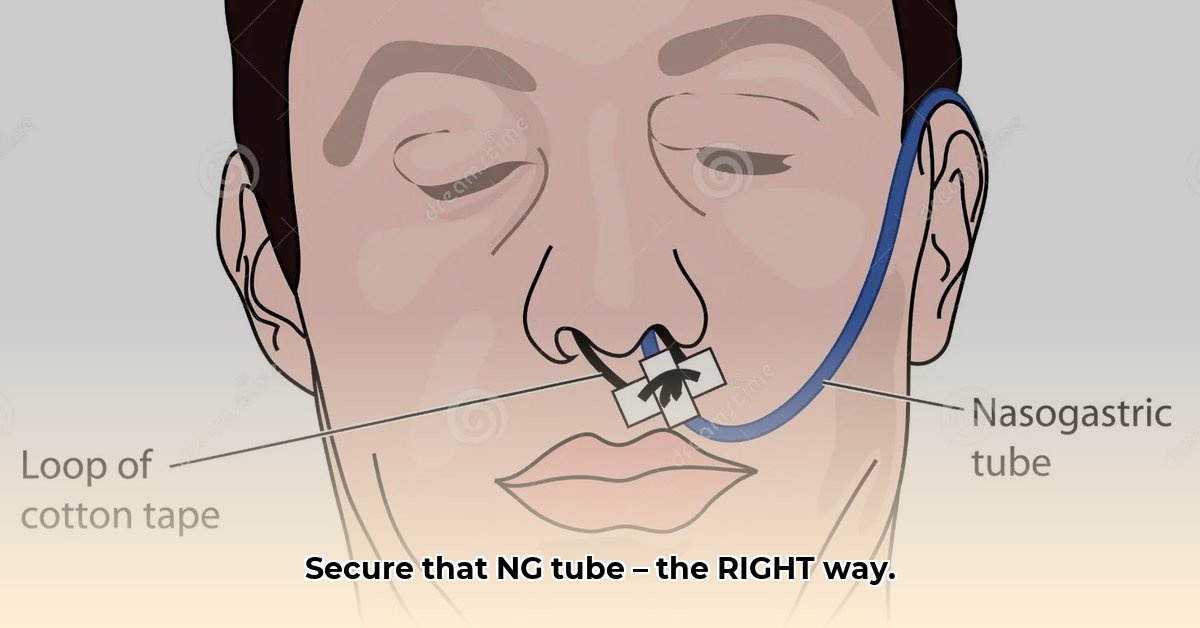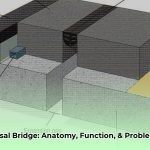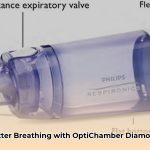A dislodged nasogastric (NG) tube can disrupt treatment and cause patient discomfort. Nasal bridles offer a solution, securing these vital lifelines. This comprehensive guide explores nasal bridles, from their purpose and benefits to insertion techniques and potential complications. Whether you’re a healthcare professional, patient, or caregiver, this resource provides valuable insights into NG tube securement.
What is a Nasal Bridle?
A nasal bridle is a small, soft device designed to secure an NG tube, preventing accidental dislodgement. Think of it as a tiny, comfortable harness for your NG tube, ensuring consistent delivery of nutrition or medication. Unlike traditional tape, which can irritate skin and loosen, a nasal bridle offers a more secure and comfortable long-term solution.
Why Choose a Nasal Bridle?
Nasal bridles offer significant advantages over tape:
| Feature | Nasal Bridle | Tape |
|---|---|---|
| Securement | High, minimizing accidental removal. | Moderate, prone to dislodgement. |
| Patient Comfort | Generally more comfortable, less irritation. | Can irritate skin and cause discomfort. |
| Cost | Higher initial cost, potential long-term savings. | Lower upfront cost, higher replacement costs. |
Step-by-Step Nasal Bridle Insertion
While typically performed by a healthcare professional, understanding the insertion process can empower patients and caregivers.
- Preparation: Gather the nasal bridle kit (bridle, catheter, etc.), lubricant, scissors, a syringe (if needed), and saline solution.
- Bridle Preparation: Consult the manufacturer’s instructions; some bridles may require pre-moistening.
- Lubrication: Apply ample lubricant to the bridle catheter for smooth, comfortable insertion.
- Insertion: Gently guide the bridle into the nostril, following the natural nasal passage curve.
- Positioning: Ensure the bridle sits comfortably, with straps positioned for securement, avoiding a crammed feeling.
- NG Tube Securement: Thread the NG tube through the bridle loops, ensuring a snug fit.
- Strap Attachment: Secure the straps to the patient’s cheek, ensuring they are snug but not overly tight.
- Comfort Assessment: Confirm patient comfort and adjust straps as needed.
Benefits and Risks
Advantages of Nasal Bridles:
- Reduced Dislodgement: Significantly decreases accidental NG tube removal.
- Enhanced Patient Comfort: Less irritation and increased freedom of movement.
- Improved Treatment Consistency: Ensures uninterrupted delivery of nutrition or medication.
- Potential Cost Savings: Reduces complications and potential hospital readmissions.
Potential Risks:
- Minor Nosebleeds: Though infrequent, some bleeding may occur.
- Skin Irritation: Potential for minor skin irritation around the bridle site.
- Pressure Sores: Rare but possible if the bridle is improperly fitted or placed. Proper training and monitoring minimize this risk.
- Rare Complications: In very rare cases, components like magnets might detach, requiring prompt medical attention.
Types of Nasal Bridles & Cost Considerations
Several nasal bridle brands exist, each with unique features. The AMT Bridle Pro® is a commonly used example. While bridles have a higher initial cost than tape, they can prove more cost-effective in the long run by reducing complications and hospital stays. Consult with your healthcare provider to discuss the best option for your needs.
Troubleshooting and FAQs
- Bridle Slippage: Verify proper strap placement and tightness. A different size may be necessary.
- Discomfort: Adjust straps to alleviate pressure points. Consider a skin barrier for added protection.
- Replacement Frequency: Adhere to manufacturer guidelines and hospital policy. Regular changes maintain hygiene.
Alternatives to Nasal Bridles
Taping remains a common alternative but lacks the long-term security of a bridle. Adhesive-based devices offer another option but may not match a bridle’s stability.
Care and Maintenance
Regular inspection for wear and tear is crucial. Clean the area around the bridle daily with mild soap and water, ensuring the site remains clean and dry to prevent infection.
Conclusion
Nasal bridles offer a significant advancement in NG tube securement, enhancing patient comfort and treatment consistency. While minor risks exist, proper placement, ongoing monitoring, and consistent care minimize these concerns. Always consult your healthcare provider to determine the most suitable approach for your individual needs, as research and product development continually evolve. They can provide personalized recommendations based on the latest advancements in NG tube securement, potentially including new techniques or bridle types.
“Ensuring secure NG tube placement is paramount for patient safety and optimal treatment outcomes. Nasal bridles provide a clear advantage over traditional taping, enhancing patient comfort and minimizing complications,” – Medical Expert Opinion.
- How Did Charles F. Brush Discover Wind Energy Tech? - November 19, 2025
- Wind Energy Vertical: Weighing the Pros and Cons of Wind Power - November 16, 2025
- How Much Energy Does a Wind Turbine Actually Create? - November 14, 2025
















